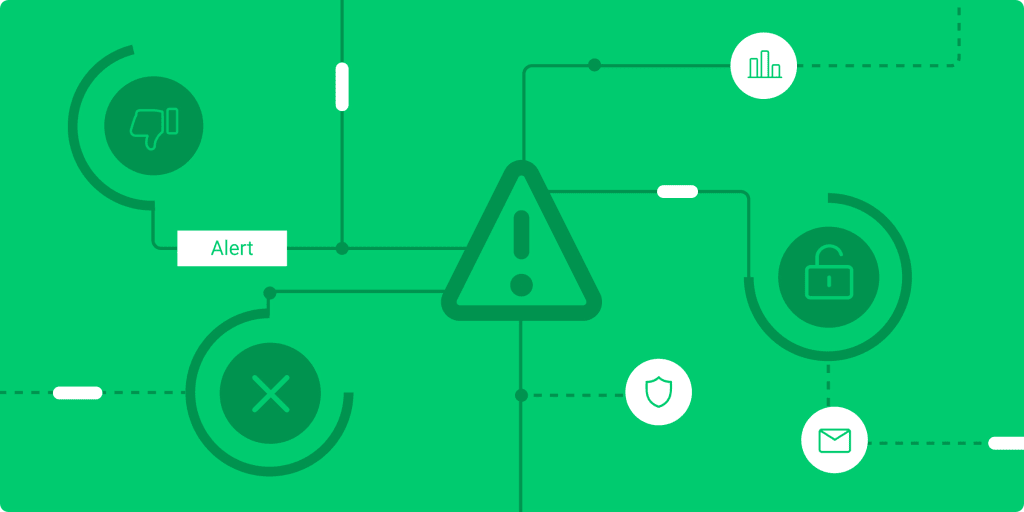If your organization isn’t actively monitoring risk, you’re leaving success up to chance. When companies fail to identify or avoid risks, this negligence can cost hundreds or thousands of jobs, create supply issues for consumers, and even affect the economy. A product recall, natural disaster, lawsuit, or new government regulation could bring your enterprise business to its knees.
This guide defines enterprise risk management (ERM) and its specific components. We’ll also explore how to implement an ERM process in 6 steps and how to use monday work management for your risk tracking.
Get StartedWhat is enterprise risk management?
Enterprise risk management (ERM) is a structured approach to identifying and mitigating any type of risk that could impact an organization. Unlike traditional risk management, which may focus on individual business units, ERM takes a big-picture, company-wide approach.
ERM aligns the practice of risk management with your long-term business goals, so instead of just protecting against risks, you can also use them as stepping stones for growth. The point of ERM isn’t to create a layer of red tape and bureaucracy but to give your organization the confidence to go faster and take calculated risks that could pay off in a big way.
Case in point: Netflix. Initially a DVD rental service, the company had long wanted to offer subscription-based streaming, but slow internet speeds meant it wasn’t initially worth the risk. Netflix waited until the time was right to adjust its offering and now dominates the streaming market.
Pro tip: want to have AI analyze all the risks of your enterprise? Check out our new features in our guide to AI-powered risk management.
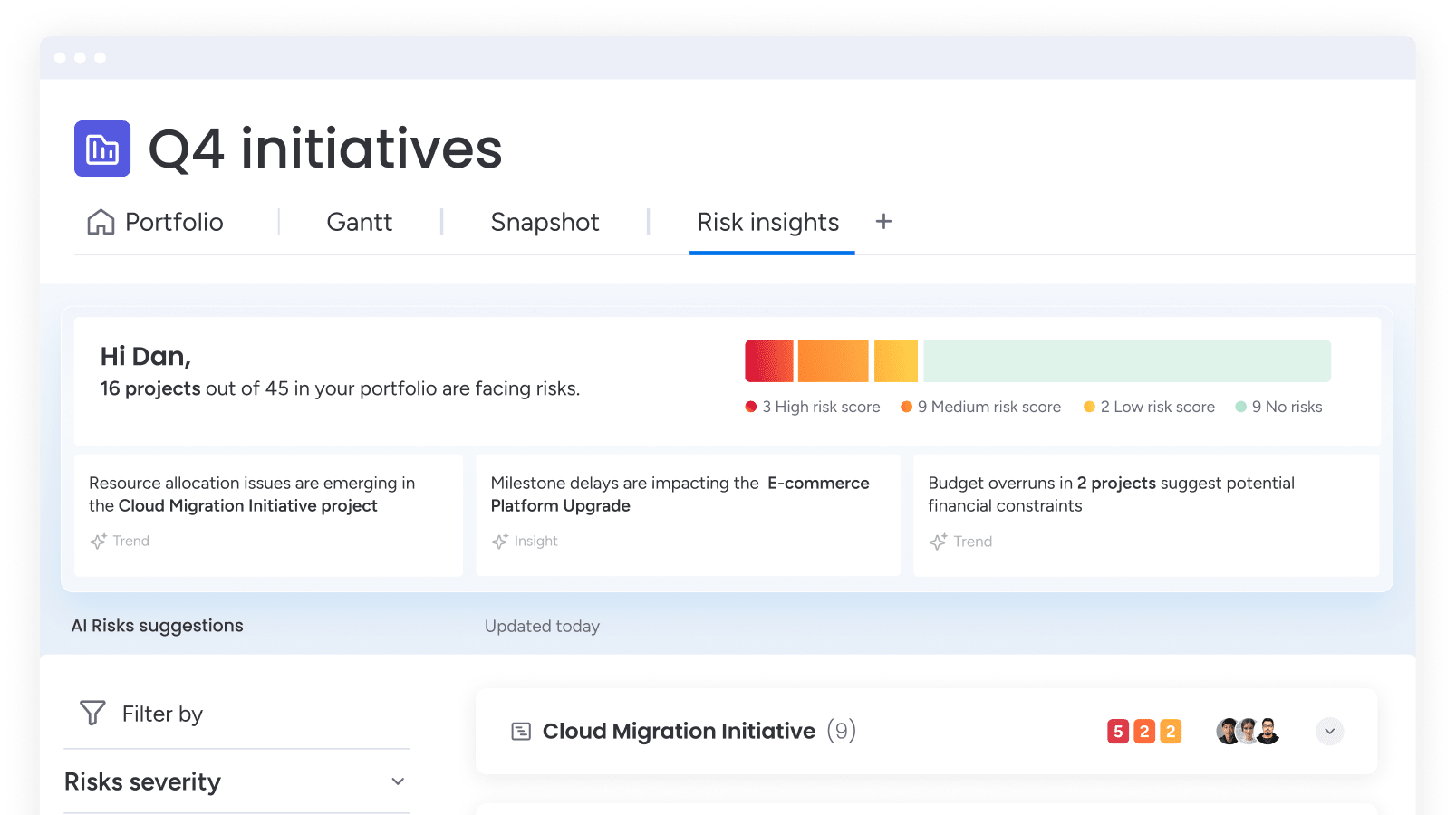
What are the components of enterprise risk management?
In 2004, the Committee of Sponsoring Organizations (COSO) board published an ERM framework, which has been updated several times in 2017, 2019, and 2020. The latest version offers case studies and practical applications demonstrating ERM’s role in organizational resilience.
This widely-used documentation defines 8 separate components of risk management as follows:
Internal environment
Your company’s internal environment is the backbone of your risk philosophy. Different components of that environment — company culture, leadership attitudes, and ethical values — shape how risk is perceived and managed. Every organization has a different tolerance for risk; some are conservative, while others embrace uncertainty to drive innovation. Defining your particular risk appetite allows decision-makers to balance risk and reward appropriately without exposing the business to unnecessary danger.
Objective setting
Risk management shouldn’t be siloed. Instead, a well-structured ERM framework bakes risk considerations into your strategic planning rather than treating them as an afterthought.
If your business aims for aggressive market expansion, for example, you may need to take calculated risks to break into new territories. Or, if your main goal is financial stability, your business strategy might focus on minimizing your risk exposure to economic fluctuations.
Event identification
This component involves scanning the internal and external environment to pinpoint potential threats that could impact your company. These risks can come in many forms:
- Internal risks (process failures, employee misconduct, etc.)
- External risks (natural disasters, regulatory changes, etc.)
- Emerging risks (technological advancements, industry disruption, etc.)
The World Economic Forum Global Risks Report ranks risk events by severity over the short and long term. Misinformation, extreme weather events, and state-based armed conflict are the most significant risks over the next 2 years. Extreme weather events, biodiversity loss and ecosystem collapse, and critical change to Earth’s systems are the biggest threats we can expect to face in the next decade.
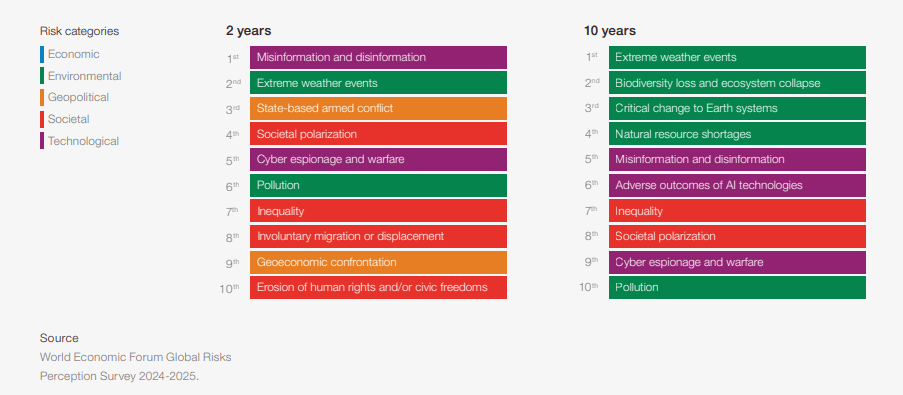
(Image source: World Economic Forum)
Risk assessment
Once you’ve identified a risk, you must also evaluate the likelihood the risk may occur and any consequences if it does. Alongside reviewing direct risks as part of your risk analysis, don’t forget to assess the fallout, or residual risks that occur as a result. For example, if you identify a new competitor as an emerging risk to your bottom line, a residual risk could be that your employees choose to work for them instead of remaining loyal to you.
Risk response
Organizations generally have four options as part of their risk management strategy:
- Risk avoidance: You’ll eliminate your company’s exposure to the risk
- Risk reduction: You’ll implement internal controls to minimize the likelihood of experiencing the risk or the impact if you do
- Risk sharing: Your company will transfer part of the risk to a third party, such as an insurance company
- Risk acceptance: You’ll acknowledge the risk exists and monitor it without actively intervening
Control activities
Control activities are the guardrails that keep risks from spiraling out of control or disrupting your critical business processes. You might use preventative measures, such as security protocols and compliance policies, or detective controls, like internal audits and real-time monitoring.
Information and communication
An enterprise risk management plan is only effective if people are aware of it. Transparent, informative communication ensures the following:
- Employees understand the company’s risk policies and reporting structures
- Leadership receives timely updates on any emerging risks or changing risk statuses
- External business stakeholders, such as investors or regulators, are informed of relevant risks and regulatory compliance measures
Monitoring
New risks emerge at any time, so monitoring is essential to identify them and adapt to changing circumstances. Your monitoring strategy should include:
- Regular risk audits to evaluate control effectiveness
- Key risk indicators to track potential red flags
- Automated reporting tools to provide real-time risk insights
Note: Besides the COSO standards, another widely recognized framework is ISO 31000, which offers a higher level, principles-driven approach to risk management that applies across industries and organization types.
What types of risks does enterprise risk management address?
Enterprise risk management is an all-encompassing practice that can identify and address a wide variety of critical risks, including:
- Strategic risks: Market shifts, consumer preference changes, industry disruptions, failed mergers, competition, innovation gaps
- Operational risks: Supply chain disruptions, equipment failures, human errors, poor process execution, natural disasters
- Financial risks: Currency fluctuations, interest rate changes, credit risk, inflation, economic downturns
- Compliance and regulatory risks: Data privacy violations, environmental fines, labor law violations, industry regulation failures, GDPR/CCPA/HIPAA violations, AML non-compliance
- Cybersecurity and data risks: Data breaches, ransomware attacks, insider threats, system failures
- Reputational risks: Negative media, product recalls, social media backlash, ethical misconduct
- ESG risks: Climate change impact, diversity and inclusion failures, corruption, environmental backlash
- Technological and innovation risks: Falling behind in tech, cybersecurity gaps, patent disputes, AI and automation failures
- Political and geopolitical risks: Trade tariffs, political instability, government policy changes, tax law updates
3 real-life examples of ERM
Companies in industries as varied as technology, financial services, manufacturing, and retail use enterprise risk management to stay prepped for any eventuality. Here are some examples of what ERM looks like in action:
1. Coca-Cola
Coca-Cola is a company committed to proactive, data-driven risk management. Its Risk Steering Committee oversees enterprise-wide risk assessments, to continuously evaluate threats across multiple areas.
One of Coca-Cola’s key ERM focuses is climate risk planning. As a beverage company heavily reliant on water, Coca-Cola assesses climate-related threats such as droughts, water shortages, and extreme weather events that could impact its supply chain. The company integrates business continuity planning to ensure resilience by diversifying water sources, improving conservation efforts, and investing in sustainable production practices.
2. Microsoft 365
Microsoft embeds cybersecurity and compliance risk management into its Microsoft 365 Risk Management Program, aligning with its broader ERP framework. Managed by the Microsoft 365 Trust Team, this program proactively detects threats through vulnerability scans, attack simulations, and security audits, assigning risk scores based on impact, likelihood, and control effectiveness.
The company also tracks and escalates these risks, according to priority. Continuous penetration testing, compliance monitoring, and stakeholder reporting keeps senior leadership informed, enabling them to develop proactive security measures.
3. Apple
Apple embeds risk management into its supply chain strategy, balancing sustainability with operational resilience. With 400+ facilities across 30 countries, many in climate-vulnerable regions, Apple faces risks from extreme weather, geopolitical tensions, and regulatory shifts.
To mitigate disruptions, Apple diversifies its supplier base, reducing dependence on any single region. It also integrates financial and operational risk controls, ensuring manufacturing stability. Additionally, its strict ESG and compliance policies help suppliers meet sustainability goals and regulatory requirements, setting it up to remain resilient in an evolving global landscape.
ERM vs. ERP: What are the main differences?
Enterprise risk management and enterprise resource planning (ERP) are 2 distinct processes you shouldn’t confuse. Here are the key differences between them:
| Enterprise resource planning | Enterprise risk management | |
|---|---|---|
| Definition | A software system that integrates core business processes into a unified platform | A top-down framework for identifying, assessing, and mitigating risks across an organization |
| Focus | Managing and optimizing business operations, such as finance, HR, supply chain, and production | Identifying, analyzing, and mitigating risks related to finance, operations, compliance, and strategic goals |
| Business functions | Operations managers, finance teams, HR personnel, supply chain managers | Risk managers, compliance officers, executives, legal teams, auditors |
| Data handling | Focuses on structured data such as financial transactions, HR records, and inventory | Includes structured and unstructured data related to threats, vulnerabilities, and compliance requirements. |
| Business examples | Automating payroll, managing inventory, integrating supply chain operations | Identifying cybersecurity threats, assessing financial risks, ensuring regulatory adherence |
Despite these differences, ERM and ERP are interconnected. ERM relies on ERP data for risk assessments, while ERP systems benefit from ERM-driven internal controls to enhance security and compliance. By integrating ERM principles into ERP platforms, organizations can maintain operational efficiency while ensuring long-term sustainability.
The pros and cons of ERM
Identifying risks and putting protections in place for your business sounds like a sensible and advantageous strategy. But there are benefits and challenges to investing in this process:
ERM pros
- ERM is proactive. Businesses can identify potential problems before they become major risk issues, allowing for preventive action rather than reactive crisis management.
- ERM ensures compliance. For companies in industries like healthcare or financial services that must adhere to strict regulations, ERM ensures organizations remain compliant, so they avoid fines and reputational damage.
- ERM enhances decision-making. ERM assesses risks across different areas, which provides executives with valuable insights they can use to drive strategic operational decisions.
- ERM increases business resilience. A well-implemented ERM framework increases an organization’s ability to withstand unexpected threats, such as economic downturns, cybersecurity breaches, or supply chain disruptions.
- ERM achieves financial stability. By mitigating risks related to fraud, market fluctuations, and operational failures, ERM helps protect cash flow, reduce financial volatility, and strengthen investor confidence, ultimately supporting long-term growth.
ERM cons
- ERM can be expensive to implement. Developing and maintaining an ERM framework requires significant financial and human resources, which can be challenging for smaller businesses.
- ERM may be bureaucratic. If your ERM framework involves excessive documentation or is overly complicated, this can lead to slow decision-making and a heap of wasted resources.
- ERM may trigger resistance to change. Some employees and leadership may resist certain processes, seeing them as unnecessary or disruptive to their workflow.
- ERM has an uncertain ROI. Risk prevention doesn’t always have an immediate or even a tangible impact on the bottom line, making it hard to measure or justify as a business process.
- ERM can give businesses a false sense of security. At its core, ERM reduces risks, but it can’t eliminate them. Companies that invest heavily in risk models and predictions may start to believe they’ve covered all bases, leaving them vulnerable to hidden threats.
How to implement an enterprise risk management process in 6 steps
A structured approach to ERM will help your company meet its strategic objectives. Customize the steps below as you implement your risk management process.
1. Identify risks
At the risk identification stage, you’ll unmask any potential risks preventing your company from meeting its business objectives. As a best practice, you’ll explore internal and external risks and how they could impact your company.
Remember: This is a firm-wide activity, so it’s important not to become sidetracked by a specific business unit. To view the full picture, consider an array of risks in an operational, financial, strategic, compliance, reputational, and security context.
2. Assess risks
Next, review the probability of any of these risks occurring. For example, any business should plan for environmental issues, but a company’s geographical location may increase the likelihood of events like earthquakes or climate events impacting its operations.
Dig deep into the details during the risk assessment process, and look at factors like how fast a risk could occur and the size of its impact.
3. Prioritize risks
The list of risks that could affect a company is endless. It’s important to plan for a range of eventualities, even though many businesses won’t have the resources to explore or safeguard against all of them.
Overcome this problem by creating priority levels of risks based on how important they are to your company and the potential impact they could have.
4. Develop risk strategies
Your strategy should be specific to the risk you face. For example, if you need to mitigate the risk of a product recall, you might plan how to improve your quality control measures or create a crisis communication strategy. A strong risk strategy is detailed, providing workflows, documentation, and roles and responsibilities that clarify exactly what everyone should be doing to overcome the risk.
5. Start mitigating risks
With all your background tasks complete, all that’s left is to integrate your risk response plan into your day-to-day activities. This step involves creating risk management policies and procedures, implementing training programs, and allocating resources to ensure the risk management process slips seamlessly into your business operations.
6. Review your risk mitigation strategies
ERM isn’t a one-and-done process. Adopting a proactive approach to risk mitigation ensures your organization remains agile and prepared for emerging challenges. Effective monitoring of your risk strategies involves continuously identifying new risks and focusing on the accuracy of your current risk forecasts. Based on the results of your review, you should adjust your strategies accordingly.
Best practices for enterprise risk management
An effective ERM framework goes beyond basic risk identification to create a structured approach toward strengthening organizational resilience and addressing any threats quickly. Establishing a clear framework to manage risks effectively allows organizations to anticipate challenges and adapt strategies in real time.
The following best practices ensure that risk management becomes an integral part of their operations rather than a reactive process:
Capture potential risk items immediately
A risk register is a structured log that tracks potential risks as soon as they’re on your radar. Setting one up is a manual process, although elements of managing the register can be automated. For example, you’ll manually log each risk item on a new line, capturing details like category, probability, status, potential impact, date, and owner to ensure risks are monitored and addressed before they escalate. But you might automate notifications to alert certain people if any statuses change.
Take compliance risks seriously
According to PwC’s October 2024 Pulse Survey, cyber threats are ranked a top business risk by 75% of executives, who anticipate tighter regulation and increased litigation in the year ahead. As a result, organizations must be prepared for evolving compliance demands. Ideally, this includes having a Chief Risk Officer (CRO) — a C-suite executive dedicated to ensuring the enterprise remains compliant with the latest regulatory requirements.
In terms of the chain of command, senior management will report potential risks to the CRO, and they’re ultimately responsible for the success or failure of your enterprise risk management program. A CRO can’t do everything, though. You’ll need to appoint various compliance officers — ideally, people with a working knowledge of your industry who also understand compliance laws and regulations.
Maximize data security
Your company’s approach to risk management should be secure, which means you’ll need a robust database security system in place. It’s also worth educating your employees on the importance of keeping sensitive data safe, for example, not using public Wi-Fi to connect to company systems and changing their passwords regularly.
According to Forrester, 78% of organizations they surveyed said they’d been breached at least once in the past year, and 22% said they experienced a data breach anywhere from 6 to 10 times in the past year. If possible, use a cloud-based enterprise risk management software that provides secure access and backup storage.
Capture your entire risk profile with monday work management
Enterprise companies need a risk-resilient platform like monday work management to spot potential pitfalls, mitigate threats, and execute risk management plans with precision. Built on top of the monday.com Work OS, our workspace unifies every piece of your strategy in a central location. Here’s what you can do with monday work management:
Control your entire risk landscape
Enterprise risk management demands an agile, all-encompassing platform. You can build a centralized risk register on monday work management, fully customizable to your organization’s unique needs. From here, all key stakeholders will collaborate effortlessly, ensuring everyone from frontline managers to senior executives can contribute to and review risk insights.
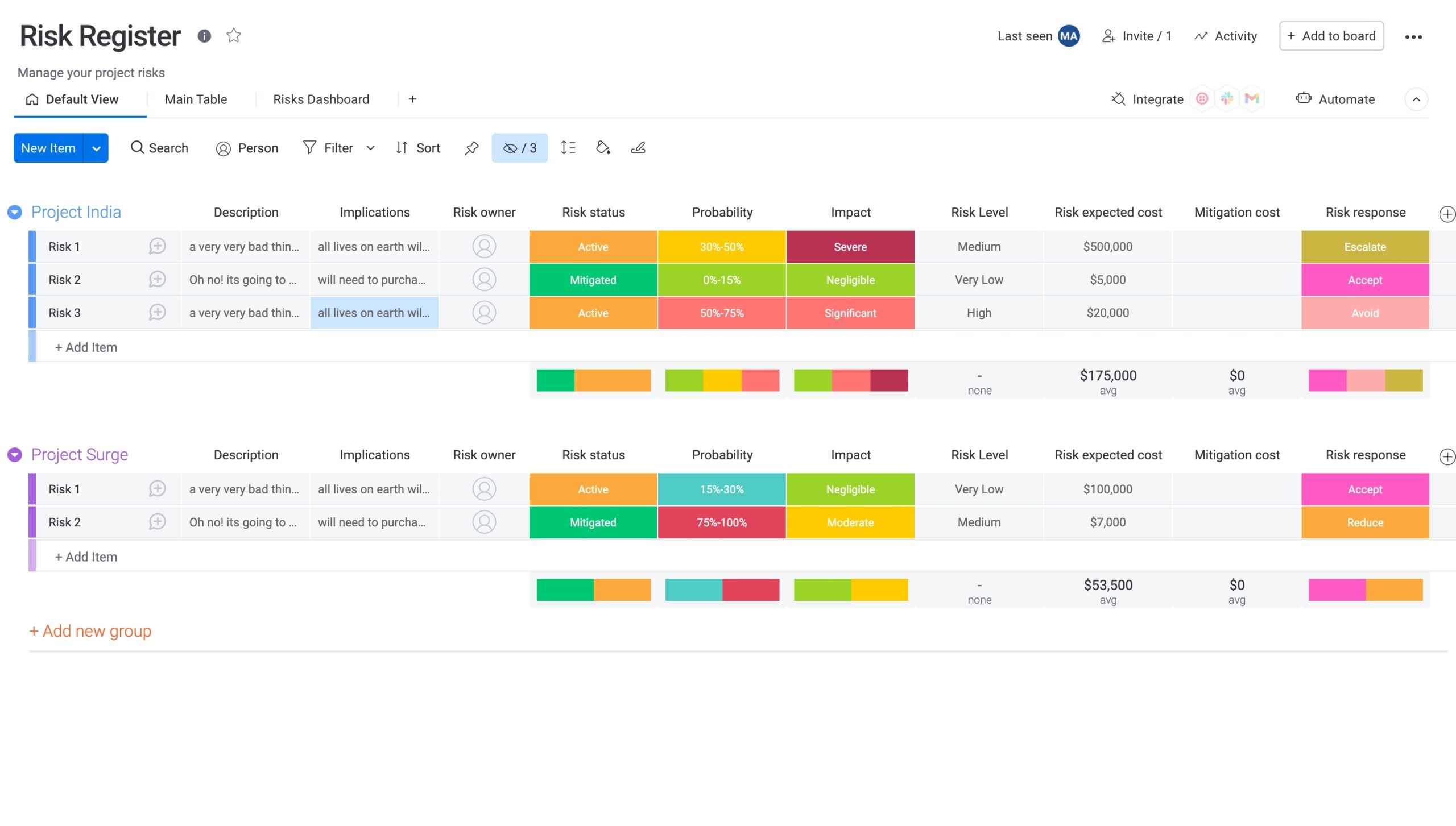
Engage teams with insightful analytics
Risk management is only effective if your teams are willing to invest in its success. Stakeholders will find monday work management’s intuitive interface easy to engage with as they follow your risk protocols. It features drag-and-drop functionality and configurable views that give leaders a clear, real-time overview of risk trends and other key operational metrics.
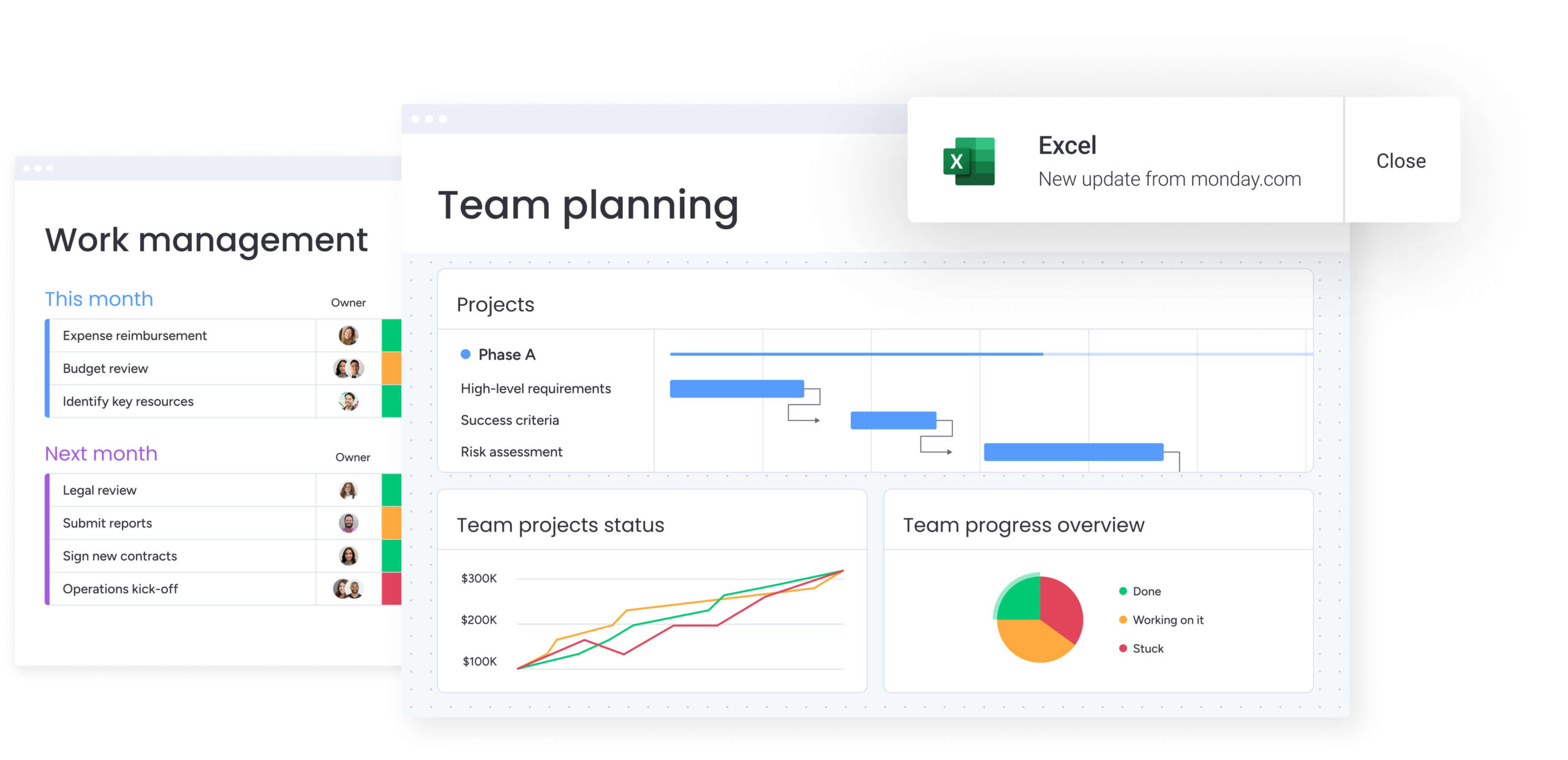
Drive immediate impact
Speed is of the essence when it comes to ERM. To reduce the lag between planning and execution, monday work management comes equipped with customizable templates and a low-code, no-code environment, so you can start managing an entire portfolio of risks from day one.
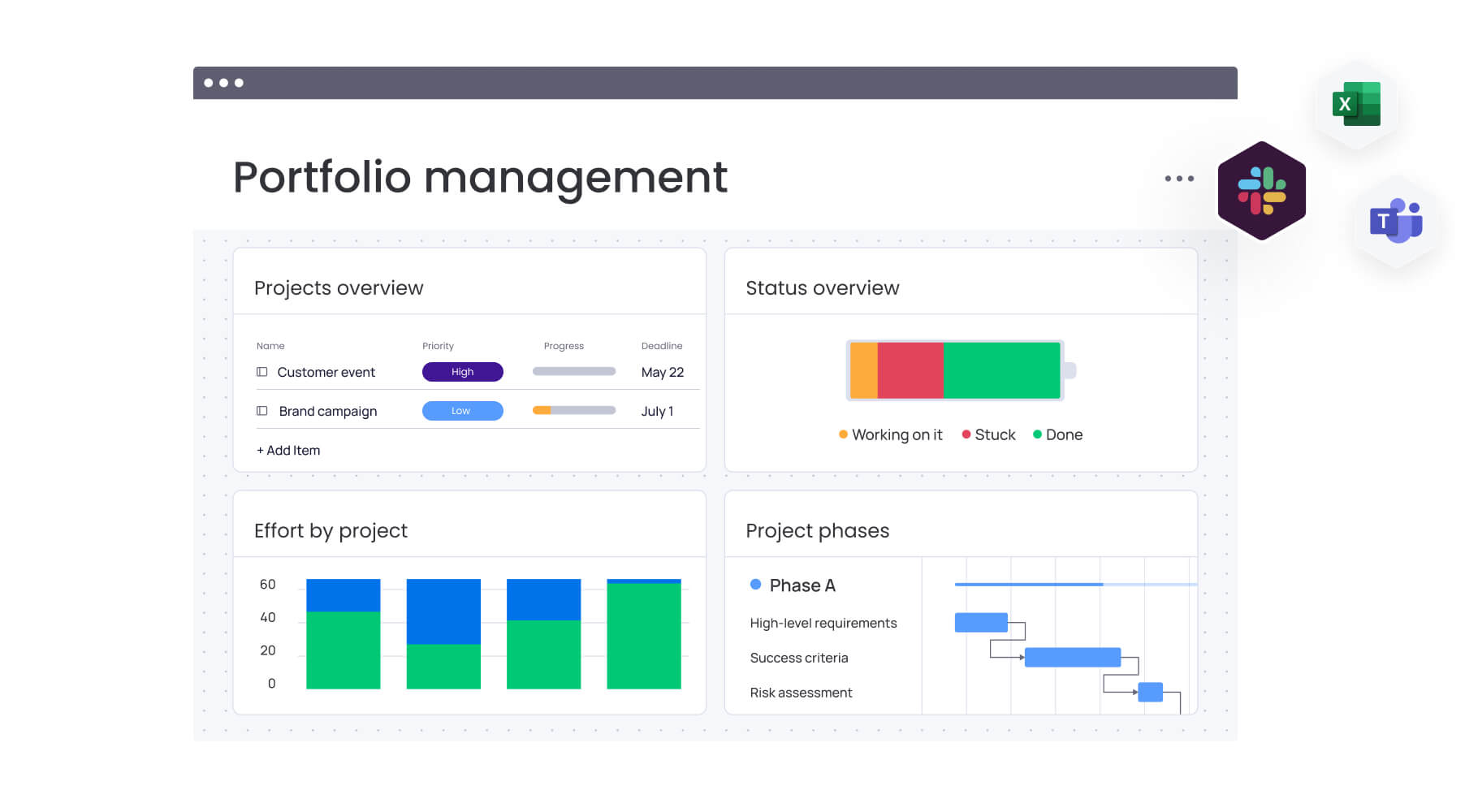
Offer secure, scalable enterprise-grade architecture
Whether your company is already large or rapidly expanding, monday work management provides top-tier security measures that meet strict industry standards. With our platform’s enterprise-grade features, your risk management capabilities can seamlessly and safely evolve alongside your company.
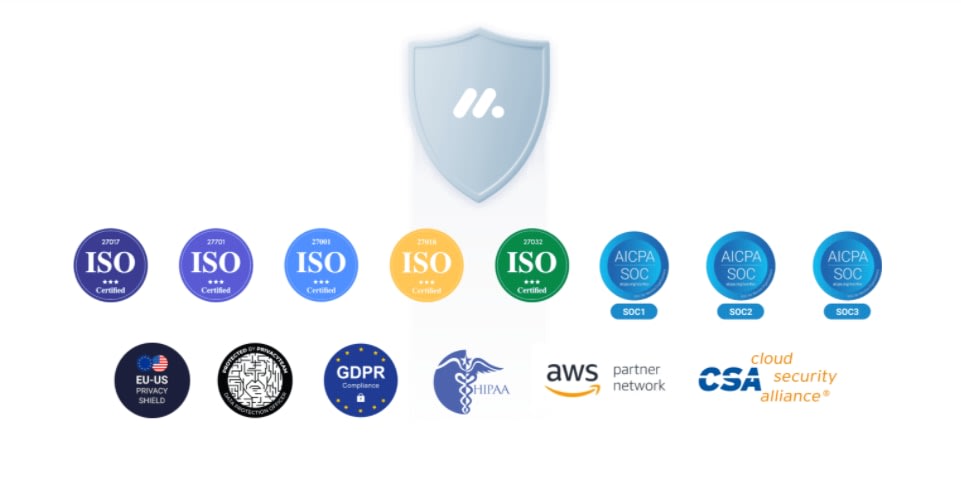
Learn how to execute your ERM strategy with confidence by getting a free monday work management trial.
Get StartedWhat are the 4 pillars of ERM?
Enterprise risk management is based on 4 main pillars:
- Risk identification and assessment: This pillar involves recognizing potential risks that could impact the organization and then assessing their likelihood and impact.
- Risk response: Businesses develop strategies to mitigate, transfer, accept, or avoid risks, ensuring that the company is prepared to handle different risk scenarios effectively.
- Risk monitoring: Regular audits, compliance checks, and key performance indicators (KPIs) track risks over time.
- Risk reporting: Transparent reporting mechanisms keep decision-makers informed and enable them to take necessary actions that minimize potential risks.
What is the goal of enterprise risk management?
Enterprise risk management aims to identify the biggest threats to your business and then determine a path to avoid or overcome them. ERM strategies protect your company's assets, reputation, and bottom line by implementing a comprehensive risk management program that is continuously monitored and updated.
What is an ERM basic framework?
A basic enterprise risk management framework delivers structured feedback to senior leaders and the C-suite by identifying and assessing risks. Using this feedback, your company can optimize its strategies for handling potential risks proactively instead of reactively. Some core elements of an ERM framework include risk identification, prioritization, strategy development, implementation, and continuous monitoring and refinement.
 Get started
Get started


